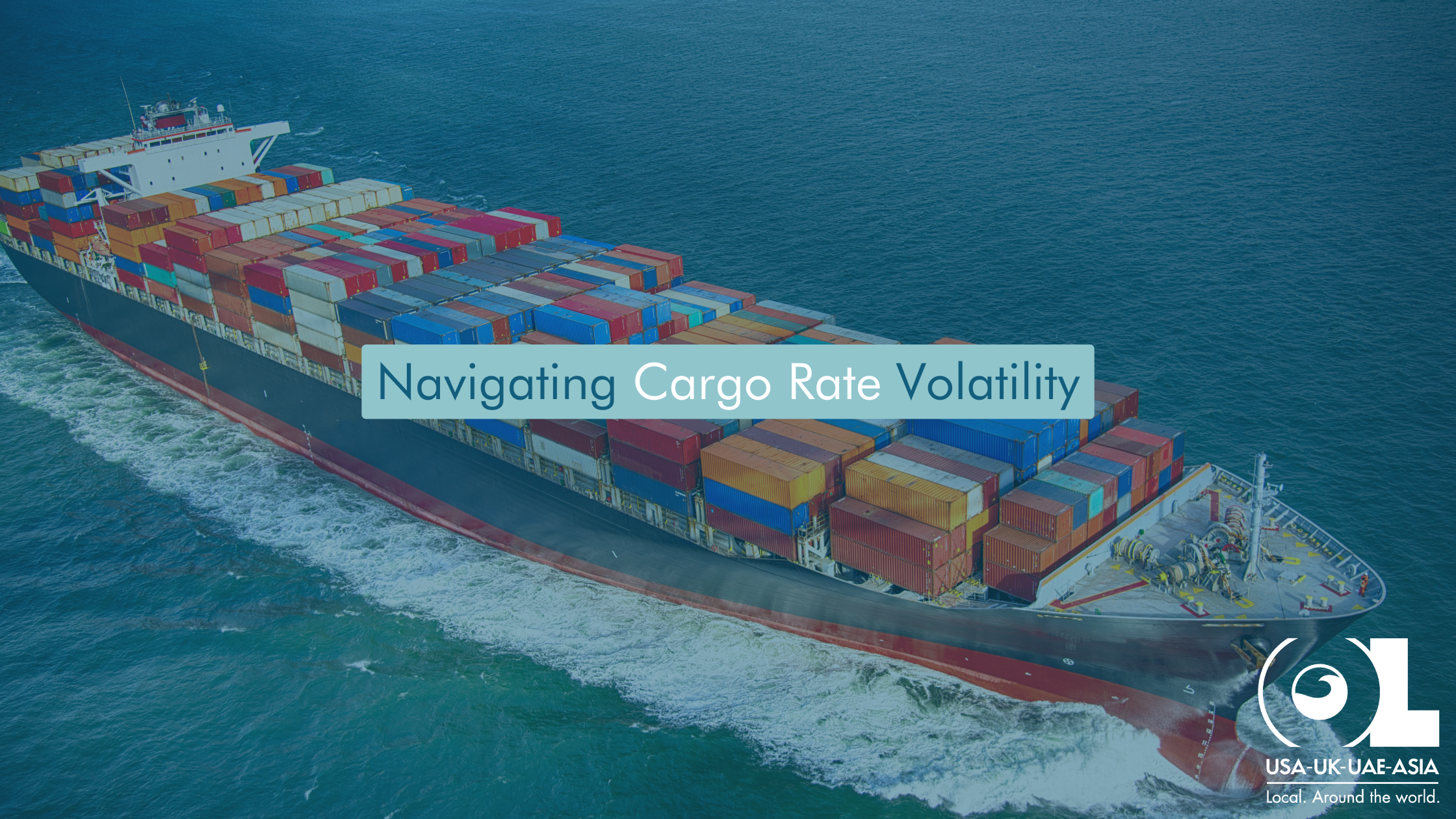Shipping rate volatility has become a significant challenge for businesses worldwide, especially in light of recent surges that echo the disruptions experienced during the COVID-19 pandemic. These fluctuations create unpredictability and stress on supply chains, affecting everything from budgeting and pricing to customer satisfaction. For businesses trying to navigate these turbulent waters, maintaining profitability and operational efficiency can feel like an uphill battle.
In these challenging times, the expertise and strategic capabilities of third-party logistics (3PL) providers have become more crucial than ever. 3PLs are not just service providers; they are strategic partners who bring a wealth of knowledge, industry connections, and advanced technologies to the table. By leveraging their insights and resources, businesses can better manage the impacts of shipping rate volatility and continue to thrive.
In this post, we will delve into the ways partnering with a 3PL can help businesses adapt to fluctuating shipping rates through expert management and strategic planning. From market insights and risk management to dynamic planning and technology integration, we’ll explore the multifaceted benefits of having a 3PL on your side.
Understanding Shipping Rate Volatility
Shipping rates can fluctuate due to a range of factors including global trade policies, fuel prices, port congestion, and unexpected events such as pandemics or natural disasters. These fluctuations can create significant financial strain, as businesses are forced to adapt to rapidly changing costs. To manage these challenges effectively, companies need more than just a reactive approach; they need proactive strategies and expert guidance.
The Value of Expert Management
Market Insights and Forecasting
One of the key strengths of third-party logistics providers (3PLs) lies in their ability to stay informed about global market trends and shipping rate fluctuations. 3PLs invest heavily in tracking industry developments and analyzing data to provide businesses with accurate forecasts and actionable insights. By having their finger on the pulse of the logistics industry, 3PLs can predict rate changes and identify emerging trends before they become widespread issues.
For businesses, this foresight is invaluable. Accurate forecasts allow companies to plan their budgets more effectively, avoiding unexpected cost increases that can disrupt financial stability. When businesses can anticipate rate changes, they can make informed decisions about shipping schedules, carrier selection, and inventory management, ultimately reducing the risk of incurring unplanned expenses. This proactive approach not only helps in maintaining profitability but also supports long-term strategic planning.
Negotiation and Procurement Power
3PLs have established strong relationships with carriers over years of collaboration. These relationships provide 3PLs with significant bargaining power when it comes to negotiating rates and terms. Unlike individual businesses, 3PLs manage large volumes of shipments, making them highly valuable customers to carriers. This volume-based leverage allows 3PLs to secure more favorable rates and flexible terms, even during periods of high volatility.
For businesses, this procurement advantage translates to cost savings and greater financial stability. Competitive pricing ensures that companies can control logistics expenses without compromising on service quality. Moreover, favorable terms such as flexible contracts and priority shipping options enhance operational stability, allowing businesses to manage their supply chains more effectively even in challenging market conditions.
Risk Management Strategies
Experienced 3PLs employ robust risk management strategies to navigate the complexities of shipping rate volatility. These strategies include diversifying carrier options, optimizing shipping routes, and leveraging various transportation modes. By not relying on a single carrier or route, 3PLs spread the risk and minimize the impact of any single disruption.
For businesses, this diversified approach means greater resilience and continuity. When one carrier faces delays or rate increases, a 3PL can quickly switch to alternative options, ensuring that shipments remain on schedule and within budget. Additionally, 3PLs continuously evaluate and optimize shipping routes to find the most cost-effective and efficient paths. By using different transportation modes, such as combining sea, air, and land transport, 3PLs can balance speed and cost, providing tailored solutions that meet the specific needs of each business.
Dynamic Planning and Adjustment
In a volatile market, the ability to adjust logistics strategies quickly is essential. 3PLs offer dynamic planning capabilities that allow businesses to pivot their operations as needed. This includes rerouting shipments to avoid congested ports, changing carriers to benefit from better rates or service levels, and adjusting schedules to align with market conditions.
For businesses, this flexibility is crucial for maintaining customer satisfaction and operational efficiency. When market conditions change unexpectedly, a 3PL can implement adjustments swiftly, ensuring that disruptions are minimized and customer expectations are met. This adaptability helps businesses remain competitive and responsive, even in unpredictable environments.
Inventory Optimization
Effective inventory management is another critical area where 3PLs add significant value. By optimizing inventory levels and distribution networks, 3PLs help businesses reduce their dependency on volatile shipping lanes. This involves strategically positioning inventory in multiple locations to balance stock levels and meet demand without excessive storage costs.
For businesses, optimized inventory management means having the right products available at the right time and place. This reduces the need for expedited shipping, which can be costly during periods of rate spikes. Efficient inventory practices also help in managing cash flow better, as businesses can avoid overstocking or understocking, leading to a more stable and predictable supply chain.
Technology and Visibility
Advanced technology platforms used by 3PLs provide real-time visibility into supply chain operations. These platforms offer detailed tracking of shipments, cost monitoring, and data analytics, enabling businesses to make informed decisions and respond quickly to changing conditions.
For businesses, this transparency is a game-changer. Real-time visibility allows for proactive management of the supply chain, as companies can monitor shipments, track costs, and identify potential issues before they escalate. Access to up-to-date information ensures that businesses can react swiftly to market changes, adjust strategies as needed, and maintain operational efficiency. This level of insight and control is essential for navigating the complexities of shipping rate volatility and ensuring long-term success.
Consider a mid-sized retailer facing unexpected shipping rate spikes due to port congestion and increased demand. By partnering with a 3PL, the retailer leveraged expert market insights to forecast rate changes and secure more stable pricing through long-term contracts with multiple carriers. The 3PL’s strategic planning enabled the retailer to optimize their inventory levels, reducing dependency on costly expedited shipping options. As a result, the retailer maintained their profit margins and customer satisfaction levels despite the challenging market conditions.
In an era of unpredictable shipping rates, the role of 3PLs has become crucial for businesses aiming to stay competitive and resilient. Through expert management, strategic planning, and advanced technology, 3PLs provide the necessary tools and insights to navigate shipping rate volatility successfully. By partnering with a reliable 3PL, businesses can adapt to fluctuating rates, manage risks effectively, and maintain operational efficiency in an ever-changing logistics landscape.



